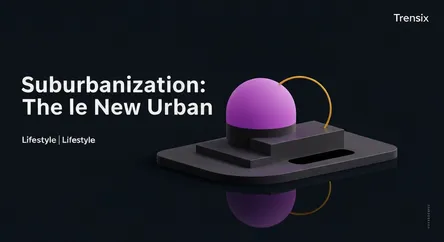Lifestyle
Suburbanization: The New Urban

Discover suburbanization, the trend of moving from cities to suburbs, and its impact on real estate, infrastructure, and daily life.
What is it?
Suburbanization is the large-scale movement of populations from dense urban centers to outlying, less-dense residential areas known as suburbs. This demographic shift leads to the growth of suburban communities and what is often called "suburban sprawl." While this has been a recurring historical trend for decades, it has experienced significant acceleration in recent years, reshaping the landscape of modern living and work.
Why is it trending?
The modern wave of suburbanization is largely driven by a quest for more space, affordability, and a different quality of life. The widespread adoption of remote work has been a major catalyst, freeing many professionals from the necessity of living near their urban offices. People are actively seeking larger homes with private yards, better-resourced school districts, and a quieter, more community-focused atmosphere. The comparatively lower cost of living in many suburban areas is another powerful motivator for this migration away from expensive city centers.
How does it affect people?
This shift profoundly impacts daily life and the housing market. For individuals, it can offer more living space but may also lead to increased car dependency. The trend drives up housing prices and demand in popular suburbs, creating highly competitive real estate markets. For cities, it can mean a changing tax base and a need to rethink urban amenities. This migration also puts pressure on suburban infrastructure, including roads, schools, and local services, fundamentally reshaping communities.